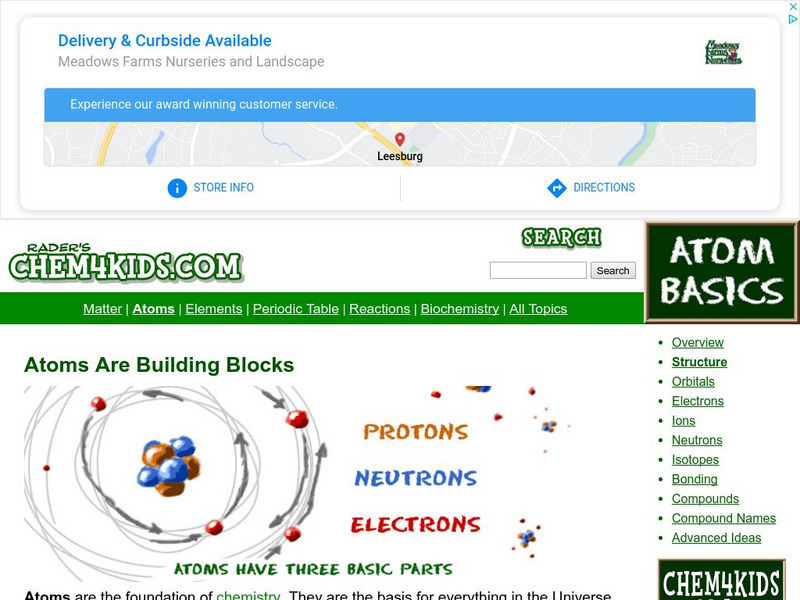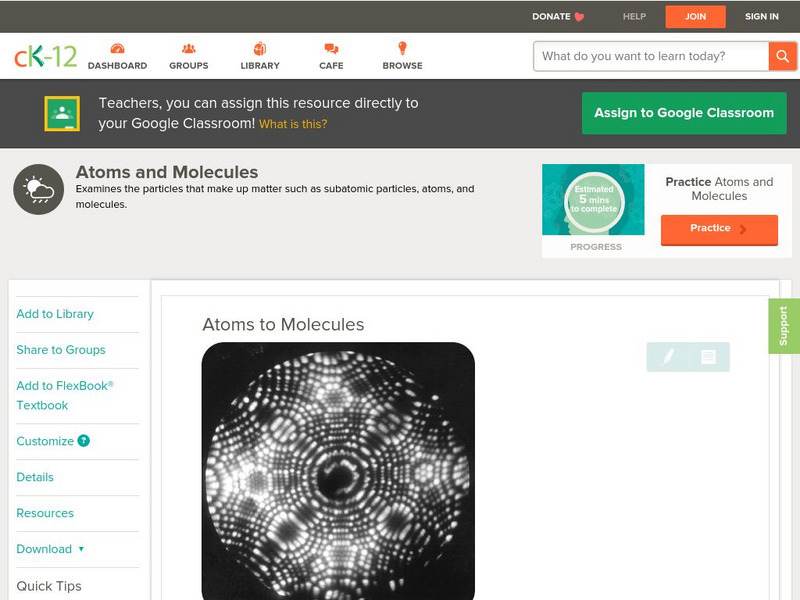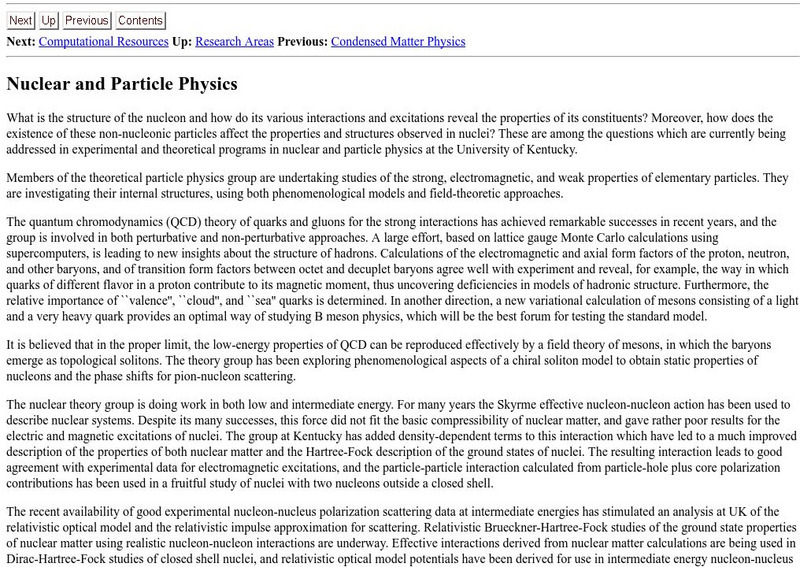Museum of Science
The Atoms Family: Spectroscope of an Atom
"The Phantom has provided you with a simulated spectroscopy of an Atom! Amuse the Phantom by observing the spectroscope and you'll learn more about the Atom." Observe and review the structure of the atom.
Lawrence Berkeley National Laboratory
Berkeley Lab: La Aventura De Las Particulas
Learn the fundamentals of particles and forces with this site. Explore the paths that explain matter in the universe.
Quia
Quia: Chemical Bonds (Ionic and Covalent) Quiz
This is 21-question multiple choice quiz over chemical bonds was written for a 7th-grade science class.
American Chemical Society
Middle School Chemistry: P H and Color Change
Learn about color change and pH as it relates to chemical changes.
Mocomi & Anibrain Digital Technologies
Mocomi: Molecules
When two or more atoms combine they give rise to a molecule. A molecule can be made up of many atoms of the same element. There are 112 elements known to man, so can you imagine the different permutations and combinations of molecules...
CK-12 Foundation
Ck 12: Chemistry: Atomic Number
[Free Registration/Login may be required to access all resource tools.] Explains the arrangement of the periodic table.
CK-12 Foundation
Ck 12: Earth Science: Atoms to Molecules
[Free Registration/Login may be required to access all resource tools.] Examine the composition of matter.
Chem4kids
Chem4 Kids: Atoms Are Building Blocks
Identify the basic structure of atoms, the building blocks for all matter.
Physics Classroom
The Physics Classroom: Static Electricity: Neutral vs. Charged Objects
With this interactive tutorial, students explore the basic terminology and concepts of neutral and charged objects.
CK-12 Foundation
Ck 12: Earth Science: Atoms to Molecules
[Free Registration/Login may be required to access all resource tools.] Examine the composition of matter.
Khan Academy
Khan Academy: Charge Transfer Processes
In this 4-question quiz, predict how charge gets transferred by conduction between two objects.
Other
Particle Physics at Discovery's Horizon: What Is the Lhc?
An introduction to the Large Hadron Collider (LHC), offering information on its location, its experiments, and what scientists hope to learn through this machine buried below Geneva, Switzerland. Click a menu of links to read details...
Florida State University
Florida State University: Powers of Ten
This webpage from the Florida State University offers an applet with succeeding images, each "10 times bigger or smaller than the one preceding or following it," as a demonstration of exponential notation.
Exploratorium
Exploratorium: Cern: Linear Accelerator
From CERN, the European Center for Nuclear Research, this site provides a brief description of the physics underlying how a linear accelerator works.
University of Kentucky
Univ Ky Dept of Physics: Nuclear and Particle Physics
Univ of Kentucky research projects address "What is the structure of the nucleon and how do its various interactions and excitations reveal the properties of its constituents?". QCD, the four forces, and nucleon-nucleon interactions are...
Shodor Education Foundation
Shodor: Acid Base Chemistry
This Shodor Education Foundation page has a nice look at the major theories of acids and bases in less than one page. There are very simple defintions.
Thomas Jefferson National Accelerator Facility
Jefferson Lab: Beta Decay
This site from Jefferson Lab provides a description of beta decay along with two helpful formula examples. Several links are provided throughout this page for additional information on related subjects.
Other
Chemtopics: Development of Modern Atomic Theory [Pdf]
A summary of the achievements of J. J. Thomson, Ernest Rutherford, Niels Bohr, and Erwin Schrodinger.
Other
American Institute Physics: Quark Stars
Collapsed stars, between white dwarfs and black holes, can be studied as quark-gluon masses, or quark-hyperon groups. Extreme pressures lead to extreme states.
New York University
New York University: Law of Conservation of Energy
Site presents a straightforward presentation of Rutherford's work concerning the Law of Energy Conservation. Provides an adequate summary of early science on the nucleus, and includes much needed illustrations.
Sophia Learning
Sophia: Isotopes: Lesson 9
This lesson will define an isotope and explain what happens if the number of neutrons in an atom changes. It is 9 of 9 in the series titled "Isotopes."
Sophia Learning
Sophia: Isotopes: Lesson 1
This lesson will define an isotope and explain what happens if the number of neutrons in an atom changes. It is 1 of 9 in the series titled "Isotopes."
Sophia Learning
Sophia: Subatomic Particles: Lesson 3
This lesson will introduce the subatomic particles and explain where they are located and how they interact. It is 3 of 7 in the series titled "Subatomic Particles."
Sophia Learning
Sophia: Subatomic Particles: Lesson 4
This lesson will introduce the subatomic particles and explain where they are located and how they interact. It is 4 of 7 in the series titled "Subatomic Particles."
Other popular searches
- Protons Neutrons Electrons
- Protons, Neutrons, Electrons
- Protons, Neutron, Electrons
- Protons and Neutrons
- Protons, Electrons, Neutrons
- Electrons, Neutrons, Protons
- Electrons and Protons
- Atoms and Protons
- Protons Neutrons, Electrons
- Atoms Electrons Protons


















